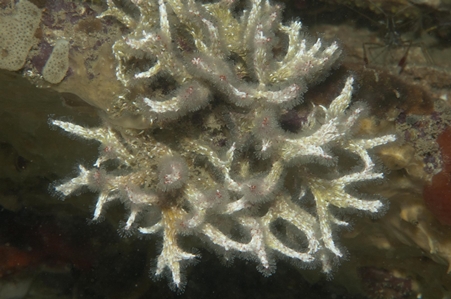General Description
In members of this genus the tube usually has a single longitudinal keels, sometimes with regular row of pits. The operculum is an inverse cone with calcified endplate. Interradiolar membrane is present. In this species the operculum is not ornamented and the opercular stalk is winged. Body up to about 1 cm long.
Biology
This is probably the most common serpulid in subtidal environments in Port Phillip Bay.
Habitat
Hard substrates, to depth of 90 m.
Reefs
Coastal shores
Distribution guide
South-eastern Australia.
Species Group
Depth
Shore (0-1 m)
Shallow (1-30 m)
Deep ( > 30 m)
Water Column
Max Size
1 cm
Diet
Organic matter
Commercial Species
No
Global Dispersal
Recorded in Australia
Species Code
MoV 3367
Identify
Conservation Status
- DSE Advisory List : Not listed
- EPBC Act 1999 : Not listed
- IUCN Red List : Not listed




